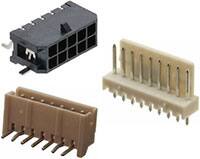Analysis
Continental Now Supplying Head-Up Displays to Two Premium Automotive Manufacturers
Continental is providing the second generation head-up display for the new BMW 3 Series. The head-up display shows relevant information such as speed, navigation and infotainment data, as well as warnings in the driver’s direct field of vision. The head-up display’s virtual screen appears around two meters in front of the driver above the engine hood, so he is informed of all important issues without looking away from the road.
“T A vibrant, full-color display makes Continental’s new head-up display appeal to drivers. Compared with the previous, restricted color spectrum, new white LEDs project the entire color spectrum from the image generated on a TFT display. The increased brightness of the white LED technology in the new image generation unit means that the new head-up display offers significantly greater contrast and can also render features such as night view displays. The new image generation unit has just 15 LEDs, contributing significantly to reduce the power consumed (rated input) by the new head-up display to around one third of the previous version, which required 128 LEDs to generate images. This efficiency makes the head-up display increasingly interesting for electric vehicles. Allowing the driver to configure the head-up display conveniently via the controls in the cockpit is a particular advantage in vehicles which are driven by several people. This is made possible by the use of a stepper motor that tilts the optical mirror inside the head-up display, in turn changing the position of the floating image displayed to the driver above the engine hood.
A vibrant, full-color display makes Continental’s new head-up display appeal to drivers. Compared with the previous, restricted color spectrum, new white LEDs project the entire color spectrum from the image generated on a TFT display. The increased brightness of the white LED technology in the new image generation unit means that the new head-up display offers significantly greater contrast and can also render features such as night view displays. The new image generation unit has just 15 LEDs, contributing significantly to reduce the power consumed (rated input) by the new head-up display to around one third of the previous version, which required 128 LEDs to generate images. This efficiency makes the head-up display increasingly interesting for electric vehicles. Allowing the driver to configure the head-up display conveniently via the controls in the cockpit is a particular advantage in vehicles which are driven by several people. This is made possible by the use of a stepper motor that tilts the optical mirror inside the head-up display, in turn changing the position of the floating image displayed to the driver above the engine hood.##IMAGE_3_R##To enable the head-up display for use in mid-range vehicles, Continental’s engineers in Babenhausen, Hesse focused on developing two core requirements: Reducing size and weight and cutting manufacturing costs. The new layout of the optical components, which reflect the image from the display to the windscreen, has significantly lowered the number of overall components required. Combined with the intelligent use of modern materials, the developers were able to almost halve the volume and weight compared with the previous version. With a volume of just 3.8 liters and weighing 1.5 kilograms, the new head-up display can be integrated in the overall concept of a vehicle more easily by automotive manufacturers. The lower number of components is also advantageous for the manufacturing costs. However, the decisive factor for optimizing costs and manufacturing processes is the modular layout of the head-up display, which is designed in such a way that very few components are specific to individual vehicle variants. Consequently, fewer different components have to be prefabricated and the individual vehicle variants of a model can be served from just one production line. To switch production between, for example, the BMW 3 Series sedan and convertible, all that is needed is a different optical mirror that has been adapted to the vehicle-specific windscreen curvature. Its many years of experience with head-up displays have endowed Continental with both core competences in instrumentation and vehicle electronics and significant know-how in terms of optics and tool making. This wide-ranging knowledge enables Continental to produce most components itself and pass on the resulting benefits to its customers directly.
 Continental also uses its wealth of experience to drive the further development of head-up displays. In this respect, research revolves around “augmented reality”- where virtual screen content from navigation and driver assistance systems merge with the driver’s actual field of vision. In the future, information considered important will be highlighted directly in the area in which it occurs.
Continental also uses its wealth of experience to drive the further development of head-up displays. In this respect, research revolves around “augmented reality”- where virtual screen content from navigation and driver assistance systems merge with the driver’s actual field of vision. In the future, information considered important will be highlighted directly in the area in which it occurs.“Augmented reality is an exciting area of research for us,” explains Eelco Spoelder. “In case of a distance warning, the vehicle in front could be highlighted in the signal color red, for example, in the driver's visual field. The driver would also be able to see directional arrows in the navigation system or a lane-change warning directly on the road.”


